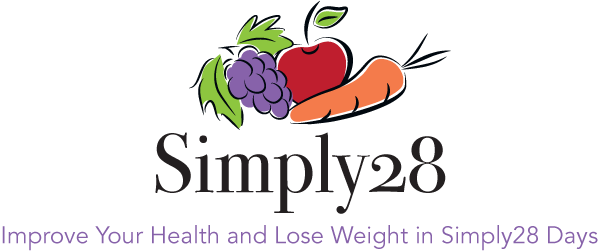There are a surprising number of symptoms that may be indicators of a food deficiency. Do you feel tired or cold all of the time? Do you feel anxious, depressed or perhaps lack mental focus? Do you experience flaky skin, brittle nails, adult acne or muscle cramps? All of these symptoms just might be indicators that you are deficient in one or more of these important nutrients. In this article we will learn ~
How can women over 40 can get enough nutrients from real food?
What foods should women over 40 eat?
And, when is supplemental support needed?

Clients that work with me as a nutritional therapy practitioner, often ask me if I think they should be taking supplements. My answer to that is that it really depends on the individual. Vitamins and minerals are always best absorbed and utilized by the body when they are derived from real food. Food contains a variety of compounds that help us digest both macro nutrients (protein, carbohydrates and fat) and micro nutrients (vitamins and minerals). Real food that is as close to its original source as possible is dense in vitamins and minerals and because the body utilizes them more effectively, we often require less of the nutrient than we would if taking it from supplemental form.
However, some people have a difficult time getting the nutrients they need from real food. Fresh food may be difficult to obtain or unaffordable in the area that they live. Genetic factors may inhibit a person’s ability to absorb or utilize the nutrients. Or, food has been grown with synthetic fertilizers in ground that is lacking nutrients making even fresh fruits, vegetables, and protein from poultry, fish, eggs and meat depleted from certain nutrients. There are a variety of reasons that supplements might be a good idea to help offset these deficiencies.
But before clients start diving in taking a bunch of unnecessary supplements that they may not need, I always recommend they ‘test and not guess’. Through my nutritional therapy assessment, we review client symptoms and identify what nutrients they might consider to support all aspects of health such as thyroid, hormones, blood sugar imbalances, skin conditions, and even gut health.
If you are interested in a complete nutritional assessment, click on this link ~
→ → → FREE Consultation with Lacee ← ← ← to access my calendar and schedule your appointment.

Top 8 Nutrient Deficiencies for Women Over 40
Based on the NHANES (National Health and Nutrition Examination Survey), the Center for Disease Control (CDC) found that many Americans are lacking in several nutrients that are essential to our long term health and longevity. People who are most at risk include youth and teenagers who primarily eat a highly processed fast-food diet, people in certain areas without access to real food, people who have genetic factors or health conditions that limit their ability to get enough nutrition from real food, elderly men and women and women over the age of 40. Here are the most common nutrients that women over the age of 40 should be concerned about.
Omega-3 Fats
Women who do not consume enough cold-water seafood including, salmon, black cod also known as sable fish, and mackerel are generally deficient in omega-3 fatty acids. Both the nuts and oils from walnuts, pumpkin seeds and flax seeds also contain omega 3 fats in lesser concentration. Symptoms can include dry flaky skin, headaches at the base of the skull or when out in the hot sun, and muscle fatigue with little exertion.
Omega-3 fats should be balanced with omega-6 fats from olive oil, avocado oil and seed oils by a ratio of about 2:1 omega-6’s to omega-3’s to help prevent long term negative effects including arthritis, heart disease, Alzheimer’s, depression and internal inflammation. Eating wild caught fish several time per week is the best way to get enough omega-3 fats in your diet or supplementing with one tablespoon of cod liver oil daily like Nordic Natural Arctic Cod Liver Oil. Alternatively, a good EPA/DHA supplement will help you get your needed omega-3’s.
Vitamin D
Vitamin D is found in fortified milk, cod liver oil, salmon and other cold-water fish, mushrooms, eggs from pastured hens, liver and sunshine! Exposing as much skin as possible to sunshine for even just 15 to 20 minutes per day, helps the body to make its own vitamin D. Ultraviolet light helps us form vitamin D in the skin which then travels to the liver to be converted to 25-hydroxy vitamin D. Do not use sun block during this time as the UV rays are needed to create vitamin D. And of course, don’t stay out in the sun long enough for your skin to burn.
Vitamin D is essential for good bone health, preventing osteopenia and osteoporosis, brain health and cognition, preventing depression and mood disorders and it may protect from cancer and type 2 diabetes. Vitamin D aids in calcium absorption and plays an important role in cardiovascular health, testosterone regulation and immune function.
The NIH says that 35% of adults in the U.S. are vitamin D deficient. If you live in an area that lacks in sunshine and you are unable to get vitamin D from natural food, a Vitamin D-3 supplement of 3,000 to 5,000 IU should be considered.

Folate (Folic Acid)
There are a total of eight B vitamins that play an important role in many bodily functions. Folate or vitamin B9 is very important for all women but is particularly important for women in their child bearing years and during pregnancy to help the baby develop properly in utero. Severe folate deficiencies in pregnant women can lead to spina bifida, a condition in which the baby’s spinal cord does not from properly. Dietary guidelines recommends that pregnant woman consume at least 400 micrograms of folic acid each day in addition to the food forms of folate.
Folate can be found in green leafy vegetables, beans, peanuts, sunflower seeds, fresh fruit, whole grains, liver, and seafood.
In an effort to reduce deficiency and prevent birth defects wheat products have been fortified with folic acid, the synthetic form of folate, since 1998. This has been effective for many women however; some women are unable to utilize this synthetic form of folate due to a genetic mutation. Some people who carry one or more mutations of the MThFR gene, may have difficulty converting the synthetic version of folic acid into the bodies useable form folate which is found naturally in food. People who carry one or more of these genetic mutations can have as much as a 75-80% inability to convert folic acid into folate.
When choosing a supplement, choose L-methylfolate which is the metabolically active form of folic acid making it more bioavailable for the body.
Calcium
Calcium is the building block for creating strong bones. It is also an important mineral to preserve heart and nerve function. Since calcium is stored in abundance in the bones the body is able to take this important nutrient from the bones and distribute to the blood and muscles as needed. When calcium is not replenished through dietary sources, the bones can become weak and brittle leading to osteopenia, osteoporosis, fractures and bones that break easily. Nearly 70% of Americans fail to meet the recommended daily intake of calcium due to poor diet and lack of calcium rich foods. In addition, the consumption of soda decreases the body’s ability to absorb calcium for about 12 hours after drinking. Symptoms can include spotted enamel on teeth, weak finger nails, and muscle cramps. More serious symptoms can include bone fractures and bones that break easily. Calcium should be in balance with magnesium.
Calcium rich foods including whole milk, aged cheese, plain whole milk yogurt, oysters and other shell fish should be consumed several times each week. In lesser quantity calcium can be found in leafy green vegetables, almonds and winter squash. People who are lactose intolerant or have a sensitivity to dairy might consider an alternative food source or a calcium supplement.

Iodine
Iodine is an essential nutrient for thyroid hormone regulation and it aids in normal growth and development. Symptoms of iodine deficiency include weight gain, thinning hair, dry skin, feeling colder than usual, a slowed heart rate, swelling of thyroid glands in the neck and in some people the development of a goiter, a visible lump at the base of your throat.
The most common sources of iodine are iodized salt, seafood, sea vegetables including kelp and nori, and some dairy products. Kelp powder can be added as a natural supplement in capsule form or as a powder used to season food with or add to soups and smoothies. See more on using kelp powder in cooking and treating iodine deficiencies in these articles:
Kelp Powder: A Natural Source of Iodine & Umami
How to Improve Low Thyroid Function
Iron
Iron deficiencies can occur from poor iron consumption, inability to absorb iron, from excessive loss of blood, and in certain stages of life including adolescence, pregnancy, when breast feeding and in menopause. Certain intestinal conditions such as Crohn’s, Irritable Bowel Disease (IBD) and intestinal permeability can result in iron deficiency either because the intestines have abnormal bleeding or because the damage to the intestines leads to malabsorption of iron and other minerals.
Symptoms of iron deficiency, or anemia, can include fatigue, dizziness especially when you stand up too fast, muscle weakness, pale skin and even chest pain in the cases of extreme deficiency.
Pregnant women and people who suffer from chronic conditions of the stomach and intestines should have iron levels checked regularly. Women over 40 should have iron levels check annually along with other biomarkers including blood sugar levels, triglycerides, homocysteine levels, etc.
Foods rich in iron include red meat, liver and other organ meats. Iron can be found in lesser concentration in spinach and other dark leafy vegetables, raisins, dried apricot, beans and peas.
Before taking an iron supplement have your levels tested by your physician.
Magnesium
Magnesium is responsible for hundreds of various metabolic reactions within the body including regulating muscle and nerve function. Magnesium helps with calcium absorption and stimulates calcitonin a hormone which triggers the body to deposit and store calcium into our bones. Magnesium also works with calcium to contract and relax our muscles, including the heart muscle. While calcium’s job is to help the muscles contract, magnesium’s job is to help the muscles relax after the contraction. A beating heart is an example of involuntary contraction and release that is controlled by the balance of calcium and magnesium in the body.
The most common signs of magnesium deficiency are muscle cramps especially in the calf, trouble sleeping at night and cravings for chocolate. Other symptoms can include fatigue and weakness, muscle spasms, loss of appetite, nausea, vomiting, fatigue and weakness.
Magnesium rich foods include avocados, nuts, legumes, flax, pumpkin and chia seeds, oats, barley, salmon, mackerel halibut, leafy greens, bananas and my favorite … dark chocolate!
Magnesium can also be absorbed by the skin by taking Epsom salt baths or rubbing magnesium creams in to your leg muscles. General recommendations when supplementing is about 360 mg per day for adult women.
Vitamin B12
Vitamin B12 Helps to build red blood cells, supports neurological function and is a building block for our DNA. B12 is found in animal foods including liver, beef, clams, sardines, tuna, salmon, nutritional yeast, dairy products and eggs.
Those at risk for B12 deficiency include vegans, people with intestinal problems, elderly, people who take medications for heartburn, women who consume a low protein diet and people who carry one or more MThFR gene mutation. Having high homocysteine levels can be an indicator of B12 and folate deficiency and if gone untreated can lead to cardiovascular disease, clots in veins, complications during pregnancy, and may be a risk factor for autism, cognitive impairment, mood disorders, multiple sclerosis and polycystic ovarian syndrome. These conditions are still being tested and considered investigational.
Symptoms can include shortness of breath, feeling weak, pale skin and mood changes however, many times a vitamin B12 deficient can be asymptomatic and go un noticed. B12 deficiency is difficult to test but is indicated by high homocysteine levels or by the presence of the MThFR gene variance.
Folate and B12 supplements are typically recommended as co-nutrients. For the best utilization choose Methyl formulations.
Well, there you have it my friend. This article is a meaty one as these nutrients are core to maintaining good health, having improved longevity, and looking and feeling great! I’ve included several helpful links but if you need more information be sure to schedule a FREE consultation.





